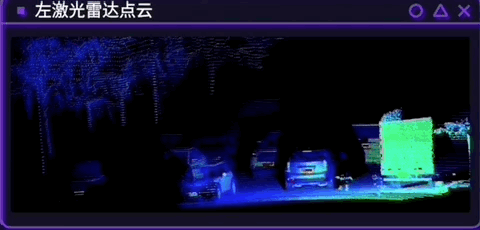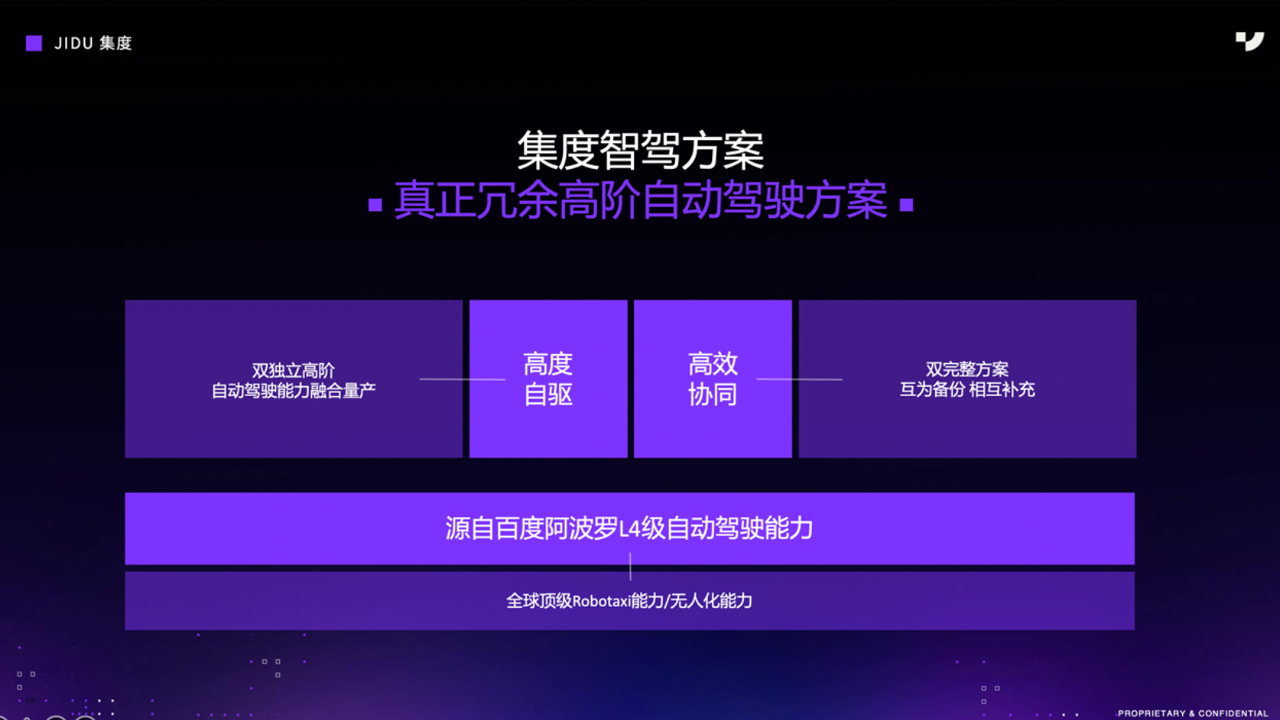Wanbo from Co-driver Temple
Reference of Intelligent Vehicle | WeChat Official Account AI4Auto
Baidu’s two latest developments in car manufacturing have been announced:
Two lidars are installed on the car, which can achieve 180-degree front-end field of view detection coverage.
Regarding route selection, Jidu revealed that the mass-produced car will adopt a pure visual route, and there will be two redundant algorithm solutions, including multiple sensors fusion, including lidars.
The two schemes are independent of each other and complement each other – “adult” Jidu, not making a choice.
At the same time, it was stated that the Shanghai epidemic had no impact on Jidu’s conceptual car and later mass production.
Two latest developments?
Firstly, the lidars are installed on the car, on the front hood.
Dr. Wang Weibao, head of Jidu’s intelligent driving division, revealed that SIMUCar 2.0, a software integration engineering prototype, has been equipped with two lidars, and testing of the multi-sensor scheme has been initiated.
Compared with the pure visual route in the SIMUCar 1.0 phase, adding lidars can supplement and redundantly deal with the blind spots of the visual solution, such as nighttime driving scenarios.
Regarding the detection effect, Jidu released a nighttime testing video:
Left lidar’s point cloud detection effect:

Right lidar’s point cloud detection effect:

This is the fusion detection effect of the two lidars:

In terms of processing capability in nighttime driving, such as unprotected left turns under low light conditions at night:

Meeting on a narrow road:

With the support of dual lidars, the performance is more confident.
It is reported that Jidu uses two AT128 semi-solid-state lidars from Hesai Technology.
In terms of ability, a single lidar has a 120-degree field of view coverage, can achieve ultra-strong long-range measurement of 200 meters at 10% reflectivity, and the farthest ground line can reach 70 meters. On the number of point clouds, the point frequency exceeds 1.53 million points per second.
According to Jidu, two LiDAR sensors can achieve a horizontal field of view coverage of 180 degrees, which is wider and more comprehensive and accurate in detection compared to a single LiDAR sensor with a field of view of 120 degrees, especially in driving scenarios with obstructions like “ghost probes” and side-crossing pedestrians or obstacles.
At the same time, the dual LiDAR sensors can achieve double overlap in the field of view area of 60 degrees in front of the vehicle, allowing for more point cloud data on target objects and higher recognition accuracy.
Next is the intelligent driving route.

Does the use of LiDAR mean that Jidu has abandoned the pure visual route of SIMUCar 1.0?
No, Jidu has revealed that it will test both pure visual and multisensor fusion solutions simultaneously in SIMUCar 2.0, and implement redundancy in its future mass production.
Moreover, unlike traditional fusion solutions, these two systems are independent and complement each other as backups.
As for which system will be the dominant one and how the two systems will work and make decisions after mass production, Jidu has not revealed.
In addition, there is one more thing that sets Jidu’s intelligent driving solution apart:
The placement of the LiDAR.

From the latest side view details of Jidu’s concept car, there are two protrusions on either side of the front hood, which are most likely the mounting positions for the LiDAR sensors.
This design reminds us of the old hidden headlight style, like this:

Compared to current cars with LiDAR sensors, which mostly place them above the front end to detect a wider range, there are also solutions like that of the Xpeng P5, which places them in the area of the front headlights, which is relatively more aesthetically pleasing.
Jidu’s solution and design are pioneering in the industry.
Any other new developments?
Another development comes from Jidu’s self-developed JET intelligent architecture.王伟宝 stated that the testing phase of SIMUCar 2.0 has started with the goal of preparing for mass production.
During this phase, SIMUCar’s underlying architecture has been upgraded from the original Geely SEA architecture to the JET (JIDU Evolving Technology) advanced autonomous driving intelligent architecture independently developed by JIDU.
It is reported that the JET architecture, based on the Baidu Apollo platform and the Geely SEA architecture, includes electronic and electrical architecture (EEA) and vehicle operating system (SOA), which can achieve Level 4 autonomous driving and software and hardware decoupling.
According to the plan, by the end of this year, JIDU’s SIMUCar’s relevant domain controllers and sensors, as well as some basic autonomous driving capabilities such as ADAS functions, parking, and intelligent interaction, can all reach the mass production state. In other words, the final preparations for JIDU’s 2023 mass-produced cars will be completed by the end of this year.
Furthermore, JIDU announced more product plans:
JIDU has launched research and pre-research on subsequent models, and its second mass-produced car is expected to be released at the Guangzhou Auto Show at the end of this year.
That’s all the latest progress in JIDU’s car-making.
one more thing
Finally, there is a much-anticipated question:
Under the Shanghai epidemic, several car manufacturers have stopped production or issued production suspension warnings. Will JIDU’s debut be postponed due to the epidemic, and will its first mass-produced car be affected?
JIDU’s response is:
The company has established a dedicated procurement team. JIDU’s concept car and the first mass-produced car to be delivered in 2023 will not be affected by the epidemic.
As for JIDU’s second car, the date of its release has been announced: the Guangzhou Auto Show at the end of this year.
— 完 —
“`
This article is a translation by ChatGPT of a Chinese report from 42HOW. If you have any questions about it, please email bd@42how.com.
